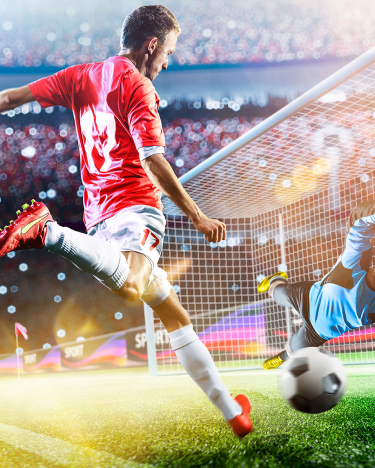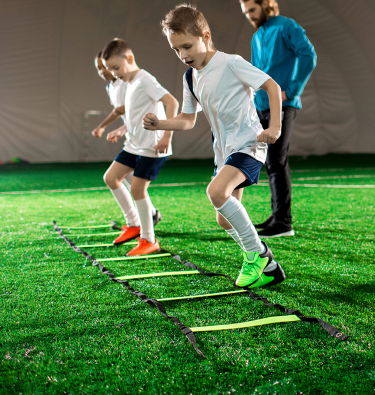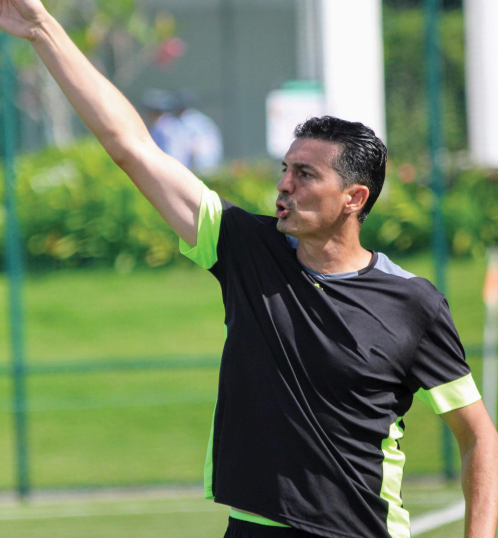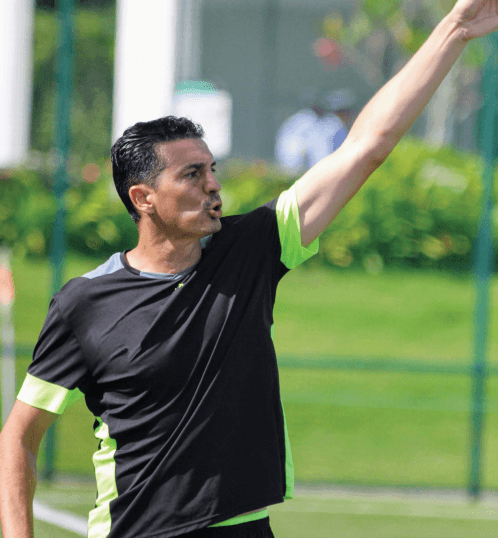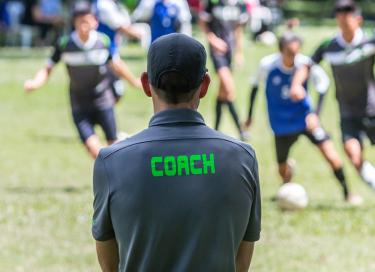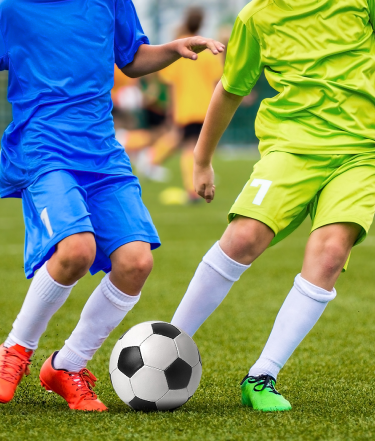5 – 7 years
Bifa looks to transform the teaching of soccer into a place for joy and constant improvement. where competition is a tool for teaching. and playing is the methodology used to cement the values of sports and institution. from an early age. Planning has to reflect this goal. We must strive to create an environment in which the coach does not present obstacles. but rather learning activities that highlight positive reinforcement and achievement opportunities above all else. Development of general coordination. Development of intelligence for group games. Development of mobility.
TRAINING MUST BE FOCUSED ON THE FOLLOWING ASPECTS:
- COORIDINATION SKLLS: developed through learning a variety of moves and simple technical skills originated from the game (soccer)
- TECHNICAL SKILLS: improved as contact with the ball increases during games. without demanding elaborate execution techniques.
- TACTICALSKILLS: The child must learn new concepts through games. both with and without a ball.
- CONDITIONAL SKILLS: Just as coordination training is developed. we must stimulate concepts related to childhood itself. a stage in which several skills are acquired.
- STRENGTH: To strengthen all muscular groups in order to improve learning capabilities related to motor skills. improve motor performance and achieve a good posture.
- SPEED: To develop the skill to make simple moves as fast as possible.
- RESISTANCE: Toadapt in order to tolerate light. prolonged effort.
- MOBILITY: Movement amplitude begins to develop, in which shoulders. hips and spine joints are involved.
- EDUCATIVE ASPECTS: Always develop the concepts of morality and aesthetics.
8 – 9 years
Learn the elements relating to the soccer technique and develop game intelligence. Develop mobility and speed. Develop general sporting coordination. At 8 years old, children enter a stage of great possibilities for the development of their general coordination and soccer technique. Most energy expenditure must be focused on that.
- COORDINATION: To reach the crude development of many movement-based skills related to a variety of sports.
- TECHNICAL SKILLS: To master the simplest technical elements of soccer, in order to improve the skill to solve exercises with growing speed when faced with obstacles and still opponents, and the expression of the technical abilities of the game.
- TACTICAL SKILLS: To play in order to gain experience in both scoring and avoiding goals, collaborate and receive support from team mates and follow the rules of the game.
- CONDITIONAL SKILLS
- SPEED: Train to make simple moves as fast as possible.
- STRENGTH: Develop quick strength in all muscular groups.
- RESISTANCE: Develop the aerobic capacities to overcome light, prolonged efforts.
- MOBILITY: Develop movement amplitude, in which shoulders, hips and spine joints are involved.
- REMEMBER: A suitable level of each conditional skill, at any age, offers the chance of a good motor learning rhythm, and an improvement in their physical, sporting and intellectual activities.
10 – 12 years
- COORDINATION: Incorporate the most motor skills possible, to be used during a soccer match.
- TECHNICAL SKILLS: The focus must be on achieving an advanced handling of the soccer techniques. These levels must be shown in games as well as fast exercise and/or with moving opponents.
- TACTICAL SKILLS: Increase intellectual capabilities in games through theoretical notions and game experiences in more difficult situations. Other requirements must be included, such as: running towards free spaces to receive the ball or to distract the opponent, fast recovery of the ball, attacking through free spaces, learning the rules of the game, etc.
- CONDITIONAL SKILLS
- STRENGTH: Rapid strength in all muscular groups.
- SPEED: Moving at maximum speed.
- RESISTANCE: Developing the aerobic skills needed to withstand even more prolonged light efforts.
- MOBILITY: Developing maximum movement amplitude that involves every joint in shoulders, hips and spine.
- TRAINING BY AREA
- DEFENDERS: Advances, heading, clearing, defensive rejections, scissor kicks, struggling runs, stealing of ball in possession, pass interception, frontal and diagonal runs, long kicks, turning starters, presence in line of defense, face to face, tactical, closing in, etc.
- MIDFIELDERS: Clearing with ball in possession, intercept passes, intercept moves in all directions, struggling and ball dispute, handling, conducting, dribbling, long kicks in long passes, safe short passes, unloading, creativity and handling in a reduced space, mid-distance shot, outer reaching in high passes, change of front and direction, reception and quick passes, attack handling and counterstrike.
- FULL-BACKS: Advances, heading, rejecting from the outside, dives, diagonals, struggling runs, loading, clearing and directional change, starters, stealing with ball in possession, closing, handling and conducting, shifting into attack, mid-run pass.
- FORWARDS: Reception: control of the ball, head, chest, instep, sole, thigh, internal edge of the foot, outer edge of the foot, abdomen.
- Conduction: with instep, outer edge of the foot, internal edge of the foot, sole, thigh, head. Scoring methods passes, with the head, instep, internal and external edges of instep, heel.
13 – 16 years
To reach critical performance levels in each of the basic conditional skills, such as:
- Quick strength
- Resilient strength
- Maximum relative strength
- Maximum speed
- Running resistance
- Skills relevant to the game itself
- Relative aerobic and anaerobic resistance
- Perfect the technical/tactical aspect
- To develop psychological skills and the education needed for the development in high performance activities
16 – 18 years
- Optimize technical/tactical skills and strategies to compete at the highest professional levels.
- Develop specific conditional skills such as: special strength (speed-resistance) and special resistance for the game.
- Develop relationship skills to perform in the internal-external social environment.



